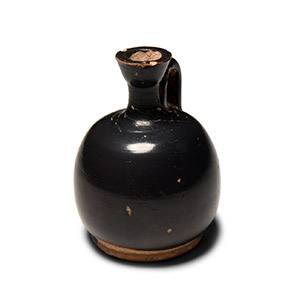Home > Auctions > 5 - 9 September 2023
Ancient Art, Antiquities, Natural History & Coins
Auction Highlights:
Ex Swiss private collection, C.A., Geneva (1961-2000).
Thence in a French collection.
with Charles Ede Limited, catalogue 183, item number 31, 2011.
Accompanied by a copy of French cultural passport number 116789, dated 15 April 2010.
Accompanied by a copy of an Art Loss Register certificate no.S00048851, dated 3 June 2011.
Cf. The Metropolitan Museum, New York, accession number 17.194.2276, for similar.
From the collection of Dr Takey Crist, Jacksonville, North Carolina, acquired late 1980s.
This lot has been checked against the Interpol Database of stolen works of art and is accompanied by search certificate number no.11854-207732.
Cf. more ornate version of the same type in the British Museum under accession no.1919,0712.1
Exhibited: The Cyprus Museum, Jacksonville, North Carolina, 1988-2018.
Ex. H.P. Payot, Clarens (VD, Switzerland) collection, by inheritance.
This lot has been checked against the Interpol Database of stolen works of art and is accompanied by search certificate number no.11855-206531.
See The Levantine Ceramics Project, Brindisi amphoras.
Acquired in Europe before 1996.
Cf. Biers, W.R., The Archaeology of Greece, An Introduction, Ithaca-London, 1987, fig.8.63, p.263, for similar.
The typical 5th century B.C. terracotta female figurine was a standing or seated woman wearing a chiton and a himation. It usually represented the goddess Demeter, and it was a votive figure offered to the shrines or temples. Attica was one of the principal centres of figurine production, but Corinth continued to produce solid standing or seated females with moulded fronts and flat backs.
From the collection of French scholar and diplomat Auguste Dozon (1822-1890).
Subsequently Hotel Des Ventes Monte Carlo, 6th May 2018, lot 7.
With French cultural property passport.
Cf. similar in the collection of the Metropolitan Museum of Art under accession no.74.51.1615 (Cesnola Collection).
Acquired in the 1970s.
Ex European private collection.
This lot has been checked against the Interpol Database of stolen works of art and is accompanied by search certificate no.11795-206534.
Cf. Summerer, L., Hellenistische Terrakotten aus Amisos: ein Beitrag zur Kunstgeschichte des Pontosgebietes, Stuttgart, 1999, figs.S II, 12,S II,16, for a similar draped head and for a female head in terracotta.
These figurines reflect sculptural prototypes. Interestingly the head of one of the women is draped in a himation, and the head is turned slightly to the right like the terracotta of Amisos which represents a dancer. These figurines were most probably manufactured in Hellenistic cities by craftsmen who used either light yellow or dark brown clay. After the firing, the surface of the clay became reddish, while the core became grey-brown. The majority of the figurines were made from untreated clay with many impurities, such as coarse grain. Due to the quality of the clay the surface of the figurines was often rugged, despite the retouch, but were painted with vivid colours, as is still visible on the pink polos on one of the heads.
From the estates of the late Adrian Stanford and Norman St John-Stevas, Baron St John of Fawsley.
with the previous owner since 1982.
with Christie's, London, South Kensington, 22 February 2017, lot 10.
Accompanied by an academic report by Dr Raffaele D’Amato.
This lot has been checked against the Interpol Database of stolen works of art and is accompanied by search certificate number no.11774-204595.
Cf. Moreno, P., ‘L’immagine di Alessandro Magno nell’opera di Lisippo e di altri artisti’ in Alexander the Great, 1993, pp.101-136; Moreno, P. (ed.), Lisippo, l’arte e la fortuna, catalogo della mostra, Roma-Milano, 1995; Alfano, C. (ed.), Alessandro Magno, Storia e Mito, Martellago, 1995; L Frumusa, G., ‘Alessandro Magno, Eracle e la Leonté nella Glittica Ellenistica e Romana’ in LANX, 3, December 2009, pp.13-35; cf. also portrait of Alexander the Great in the Athens Archaeological Museum in Bieber, M., Alexander the Great in Greek and Roman Art, 1964, p.52, fig.37, pl.XX.
The head represents a Hellenistic portrait of a young man, whose characteristics seem to suggest a reference to a youthful portrait of Alexander the Great. Another possibility is that it represents the portrait of Alexander’s companion, Hephaestion.
Collected since the 1970s.
Ex Everitt collection, acquired by descent 2017.
Acquired 1980-2015.
Ex Abelita family collection.
Cf. The Metropolitan Museum, accession number 74.51.3506, for similar.
Private collection, Sussex, UK; acquired 1975-1990.
Cf. similar in the collection of the British Museum under accession no.1931,0216.14.
Acquired in Europe before 1990.
This lot has been checked against the Interpol Database of stolen works of art and is accompanied by search certificate no.11810-206516.
Cf. Boardman, J., Athenian Red Figure Vases. The Archaic period, London, 1975, fig.81.
The everyday life of ancient Greeks is well represented on the Attic red figure paintings. The short cloak (chlamys) is the favourite garment for the men and the hair of the younger men is more often shown cropped than in the black Attic figure paintings. The nakedness of youths exercising at the palaistra could well have been an important source of inspiration for the Greek artists who were becoming increasingly aware of the possibilities to represent the physiology of subtle movement in paintings. The Thaliarchos painter is generally recognised as the artist of the tops of some powder-box pyxides, although it is not excluded that he was actively painting various types of vessels. The type of ground and the way in which the foot of the man is worked can support the thesis that the fragment is from his workshop.
Acquired in Europe before 2001.
European collection.
49 - 60 of 2453 LOTS

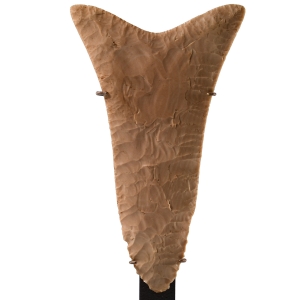
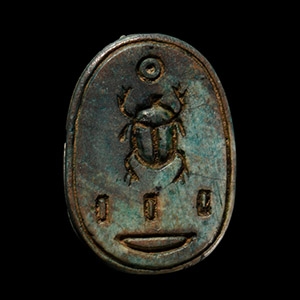
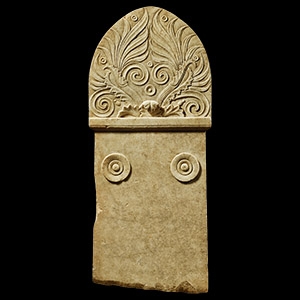
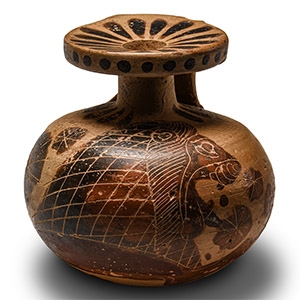
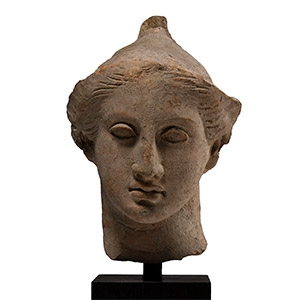
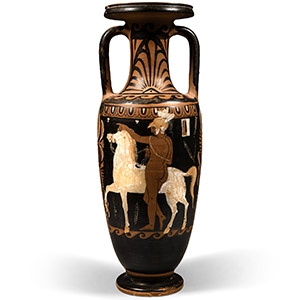
.jpg)
.jpg)
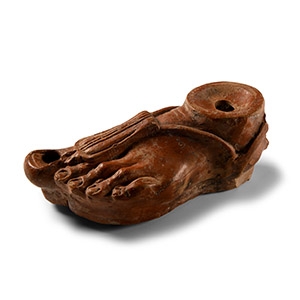
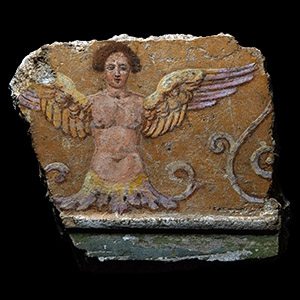
.jpg)
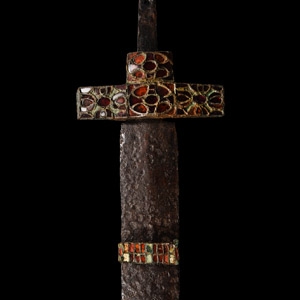
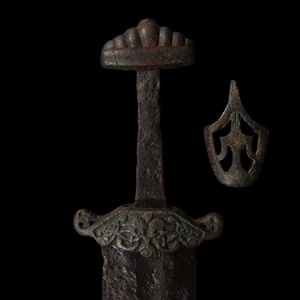
.jpg)
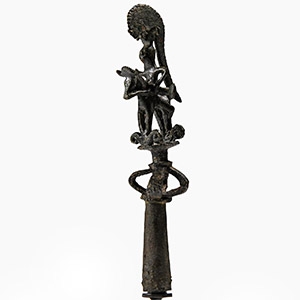


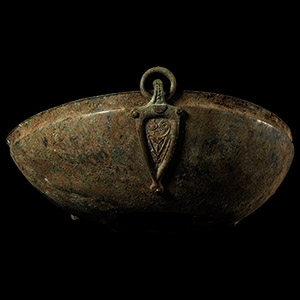
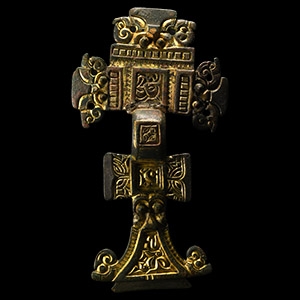
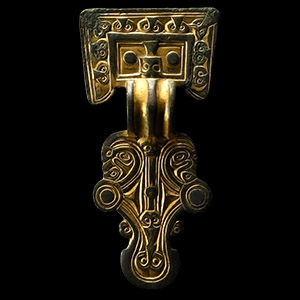
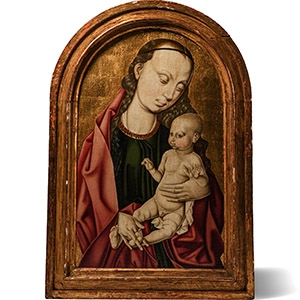

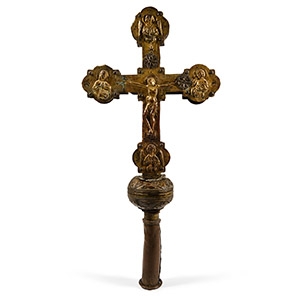
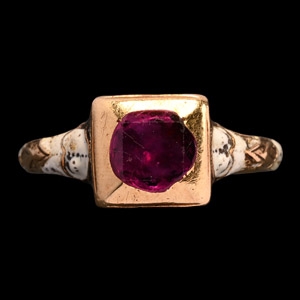
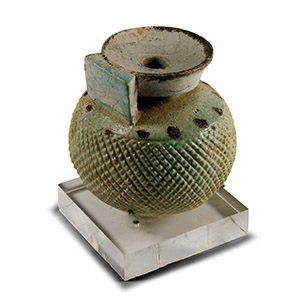


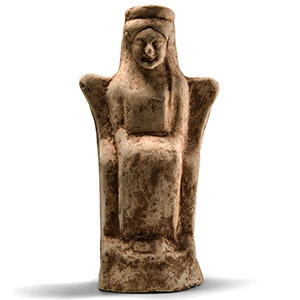
.jpg)
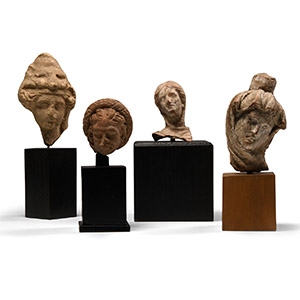

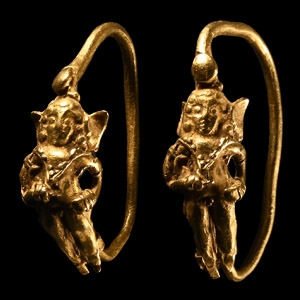
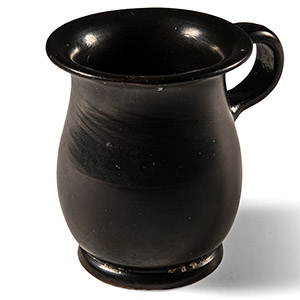
.jpg)
